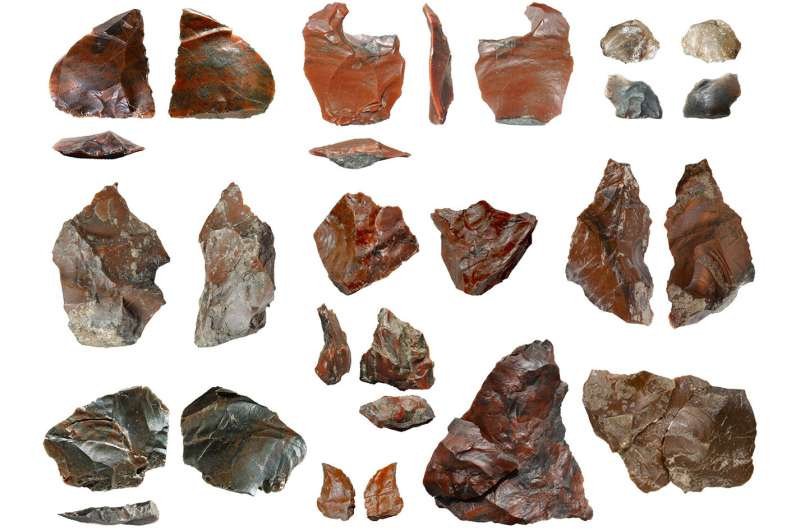🧐 Ancient Beat #156: A matrilineal Çatalhöyük, unexpected mounds, and hominins doing hominin things
Oh hey, fancy seeing you here. This is issue #156 of Ancient Beat. Let’s get into it.
Here’s the latest ancient news. 👇
🗞 Ancient News: Top 5
Stone Age Farmers’ Households Passed From Mother to Daughter — At the Neolithic site of Çatalhöyük in present-day Turkey, recent ancient DNA evidence has revealed that households were matrilineal and passed down through the female line. Mothers and daughters formed the core of domestic units over several generations. Spatial patterns, burial placements, and genome data—spanning a few centuries around 7000 BCE—show continuous matrilineal residency within settlement clusters. This challenges traditional views of early farming societies as patriarchal, indicating that women held central, inheritable roles in property and social structure. The findings illuminate how gender and kinship shaped the development of early agricultural communities in Anatolia. Gotta love Çatalhöyük — full of surprises!
Ancient Andean Burial Mounds Reveal Early Hunter‑Gatherer Roots Of Monumental Architecture — In the Titicaca Basin of the Peruvian Andes, a cluster of burial mounds at Kaillachuro, dated to roughly 3,300 BCE, has been revealed as monumental structures built by hunter‑gatherer groups—about 1,500 years earlier than previously known local architecture. These earthen mounds, constructed over 2,000 years, began as simple pits that evolved into visible landmarks. This challenges the assumption that only hierarchical, agricultural societies could undertake large communal construction — strange assumption for folks to make IMO, but there you have it. The sites emphasize ritual and memorial practices shaping early monumental activity
First Hominin Fossils Recovered From Submerged Sundaland — In underwater-dredged sediments off eastern Java, two hominin fossils were recovered from sand used to build an artificial island. They date to roughly 162,000 ± 31,000 and 119,000 ± 27,000 years ago, during Marine Isotope Stage 6. One fragment (MS1) is definitively Homo erectus, showing they once roamed now-submerged lowland plains. The second (MS2) is archaic Homo but species-unspecified. These are the first prehistoric human remains found in submerged Sundaland, broadening our understanding of hominin distribution across now-flooded landscapes.
Small Tools, Big Animals: 430,000‑Year‑Old Butchery Investigated In New Study — On the shores of a prehistoric lake at Marathousa 1, an archaeological site in the Greek Megalopolis Basin, researchers have uncovered compelling evidence of hominins using small stone tools—just a few inches long—to butcher the remains of a straight‑tusked elephant (Palaeoloxodon antiquus) around 430,000 years ago. The tools were finely made from local raw materials, reflecting a flexible and well‑adapted tool‑making tradition. This challenges the notion that only large cutting implements were used for massive prey and suggests early humans possessed behavioral sophistication and efficiency in resource use.
Trading Knowledge—Not Wares: Archaeological Study Sheds Light On Women's Overlooked Role In Papua New Guinea Sea Trade — Research into pottery sherds from the Motu people (650–300 cal BP, ~1350–1650 CE) reveals women played key roles in cross‑cultural exchange; not just men. These women shared technical know‑how—such as pottery skills—not just goods, challenging long‑held assumptions about male‑dominated maritime trade networks. This insight reshapes our understanding of gender roles in historic sea trade.
That’s it for the free Top 5! If you’re a free subscriber, sign up for the paid plan for another 28 discoveries and 7 recommended pieces of content covering mysterious urns, acupuncture, lost hymns, ancient citadels, and the lighthouse of Alexandria.
Until next time, thanks for joining me!
-James
Twitter: @jamesofthedrum
P.S. Here’s my Buy Me A Coffee link if you’d like to support my efforts with a donation.
P.P.S. If you want access to the paid version but it’s a little too steep for you right now, just email me — I want this to be accessible.
P.P.P.S. Paid members, read on!



